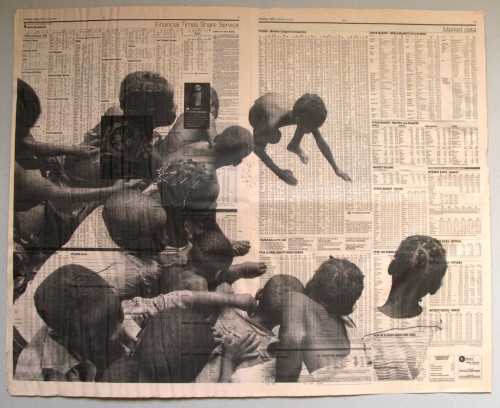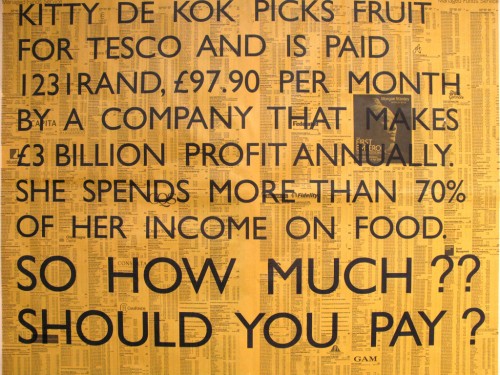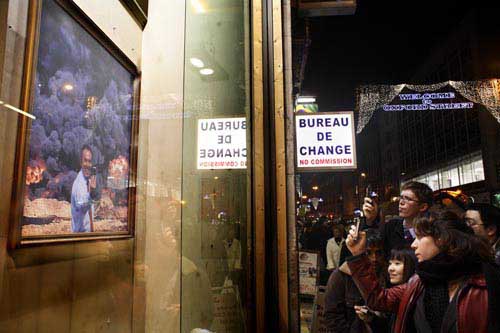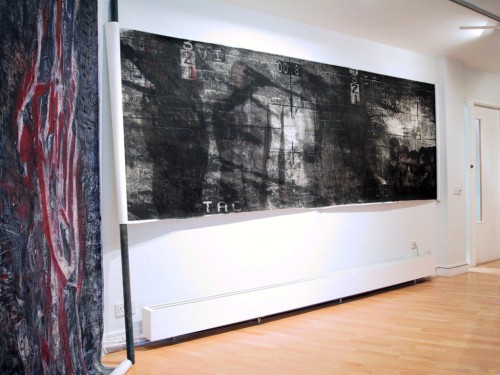“We hope to be finished by lunchtime…..”, National Photographic Archive, Dublin
“We hope to be finished by lunchtime…..” new work criticising the Iraq Inquiry will be on show this July.
Fragments From a Broken World – National Photographic Archive – Meeting House Square – Temple Bar – Dublin 2 – Ireland July 2nd – August 2nd Admission free
G20 New Number of the Beast 2009
To mark the G20 arrival in London and celebrate the protesters in the City we’ve made a trashed installation down in shopping central
Santa’s Ghetto, Bethlehem 2007
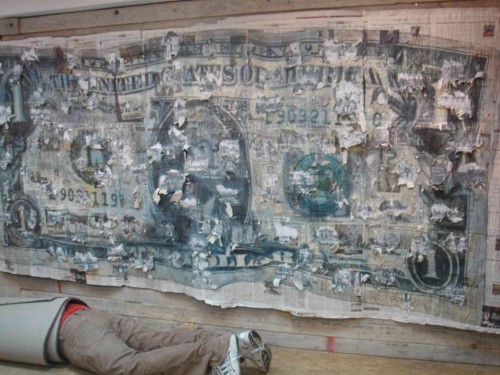
we’re still smoking the jordanian ‘rizlas’ johnny got us from the local shop – their the purest smoke, no glue! anyone know how to import them? We haven’t put up any pictures of our palestinian friends here for fear that they’d get hassled by the israeli authorities – but we think of you lot a lot!
some of our prints next to Sulheiman Mansour’s sculpture of cracked mud – we met Sulheiman, he’s a beautiful artist, done some radical work, he told us of a teahouse he opened for a day in the threatened and abandoned heart of Hebron where the palestinian citizens are terrorised by the young soldiers of Israel and the now present israeli settlers who have been ‘settled’ in the centre of the major palestinian city of Hebron. The palestinians shops and houses are still there but abandoned, under threat from israeli’s, and down there in the heart of the old city Sulheiman and a band of artists opened a teahouse to sit drink tea and discuss anything with regular citizens, israeli troops and israeli settlers. He described it as a successful attempt to start dialogue between whoever came along. Sulheiman is a driving force at the Arts Academy in Ramallah.
We walked down those streets in the heart of Hebron, the palestinian people had to erect cages to cover their streets to protect themselves from missiles being dropped by israelis who occupy the upper floors of the buildings.
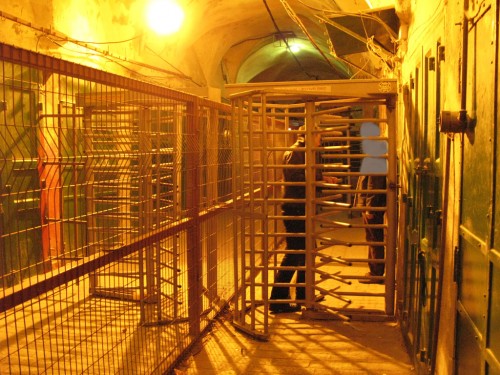
checkpoint at exact centre of Hebron to stop palestinians from freely accessing their mosque on the other side
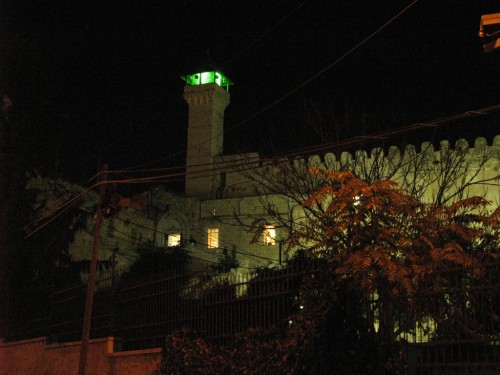
the mosque. This is where the israli occupation of Hebron began, about 10 years ago a group of israeli settlers entered this mosque and shot dead more than 40 palestinian worshippers. From that point on the state of Israel declared it an no go area, state of emergency and encircled it with 4000 israeli troops, after a year Israel lifted the no-go status but left the soldiers in place and began placing israeli settlers in surrounding houses, the state invited the settlers to use the mosque as their place of worship which they do. The Israeli settler population that inhabit the area around the mosque number only 150 people but they have a school. Many choose to sleep outside the city in neighbouring settlements but dutifully bus in every day under military escort in order to occupy the area. 4000 soldiers provide ‘security’ for this little group of families. The palestinian citizens who had houses and shops in the area have been harassed by the soldiers, which is severe, to a point where most dwellings belonging to them lie deserted. The Palestinian Authority runs an incentive programme that allows free electricity and water and low rent to any palestinian willing to live in these streets, only the very desperately poor take up the offer. Palestinians are allowed to use a small part of the mosque at certain times if they are willing to face the checkpoint that surrounds it.
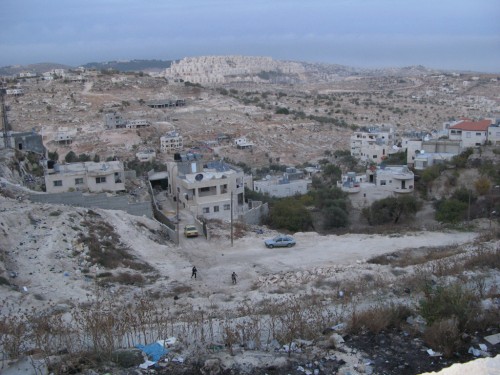
the mad military aesthetic of the israeli settlement. we would see this one from Bethlehem on our walk home from the Ghetto each night. it’s been built in the last 10 years
Forms of Resistance:Artists and the desire for social change from 1871 to the present. 2007
Forms of Resistance was a large show at the Vanne Abbe Museum, Eindhoven, Netherlands, for which we remade soldier#1 as a billboard and showed the STOP protest posters surrounding the footage from Lakenheath airbase.
The exhibition Forms of Resistance shows that ‘art and resistance’ are both timeless and universal. Although politically engaged works often put content first, this exhibition shows that art is an outstanding method of transforming content using form.
The exhibition draws on four historical events: the Paris Commune (1871), the Russian Revolution (1917), the Prague Spring (May ’68) and the world after the fall of the Berlin Wall (1989). This division does not pretend to be historically exhaustive but shows how resistance through the centuries has been repeated and revived, and has not been merely limited to social problems of a national nature. Socially conscious artists are often part of a larger movement or organisation, such as the Futurists, Constructivists, Bauhaus, Atelier Populair, Brigadas Ramona Parra or the Angola Committee in the Netherlands. There are also photograph and video collectives, which were particularly prevalent in the 1970s and highlight abuses on every continent. Other people, such as John Heartfield, Adrian Piper, Hans Haacke, Valie Export and Sanja Ivekovic, work alone. Marco Scotini’s Disobedience archive, which contains a collection of manifestations of civil disobedience, provides a social platform for related yet independent forms of protest all over the world.
Artists and graphic designers have emerged as idealists, accusers, underground activists, guerrillas, anarchists or propagandists at key moments throughout history. Forms of Resistance shows how artists through the ages have used their talents to react to society. Through the explicit political and social context of their art, citizens and governments are addressed directly. It is not so much an act of artistic recognition as a political protestation or an open declaration of sympathy.
Blairaq 2007
Blairaq
pigment ink and pva on newspaper
300cm x 600cm
Leonard Street Gallery, London, Uk 2007
Antennae 2007
pigment ink on newspaper
350cm x 300cm
Houston Centre of Photography, Texas USA 2007.
The work is a portrait of George Bush printed across 58 copies of the Houston Chronicle torn through to reveal images of the destruction of the Iraqi people and their landscape.
Cafe of Equivalent$ nominated for Brit Insurance Design Awards
The Cafe of Equivalent$ has been nominated for a Design Award and will therefore be on show alongside 99 other nominated international projects at the Design Museum in London from mid february till june.
Playing around with the the concoction, fabrication of value in the global capitalist financial system, we engaged city workers with some simple truth derivatives during their lunchbreak, equating their salaried/bonus income with the cost of lunch for a worker in the producing countries ie Mozambique, Brazil, Indonesia, Bangladesh.
Obscenity 2006
V22 Gallery, Ashwin Street, London, UK
THIS IS A 3D QUICKTIME IMAGE OF THE 4 ROOMS OF THE GALLERY AT ASHWIN STREET
TO VIEW OUR WORK IN ALL 4 SPACES CLICK ON THE PICTURE AND DRAG THE MOUSE TO MOVE AROUND THE SPACE. CLICK WHEN AN ARROW APPEARS AND YOU’LL MOVE THROUGH TO THE NEXT ROOM. ZOOM IN OR OUT FOR BETTER VIEW
Obscenity at V22 Ashwin Street in 2006
Santa’s Ghetto 2006

Santa's Ghetto, Oxford St, London 2006
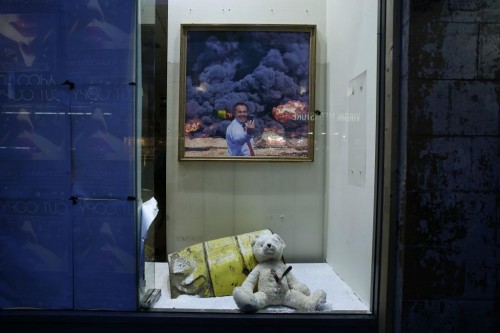
in the ghetto’s window on oxford street, london
Untitled Iraq 2006
pigment ink and oil on canvas
110cm x variable
Photofusion, Brixton, London
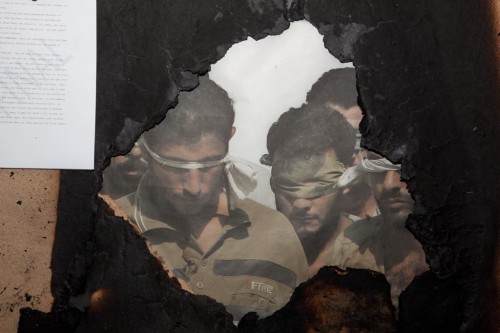
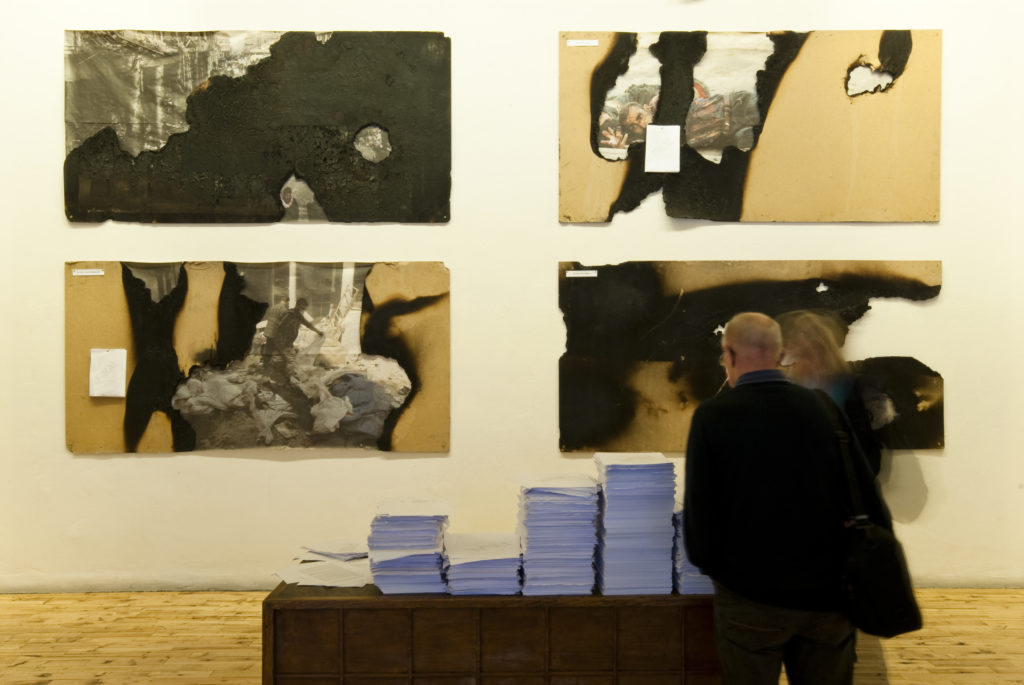
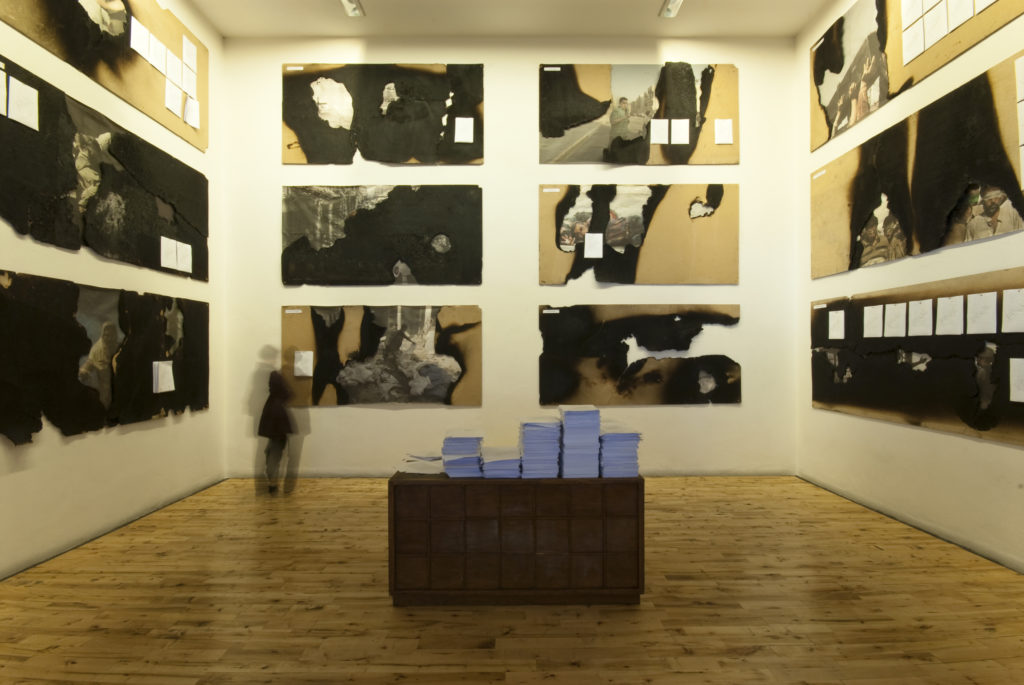
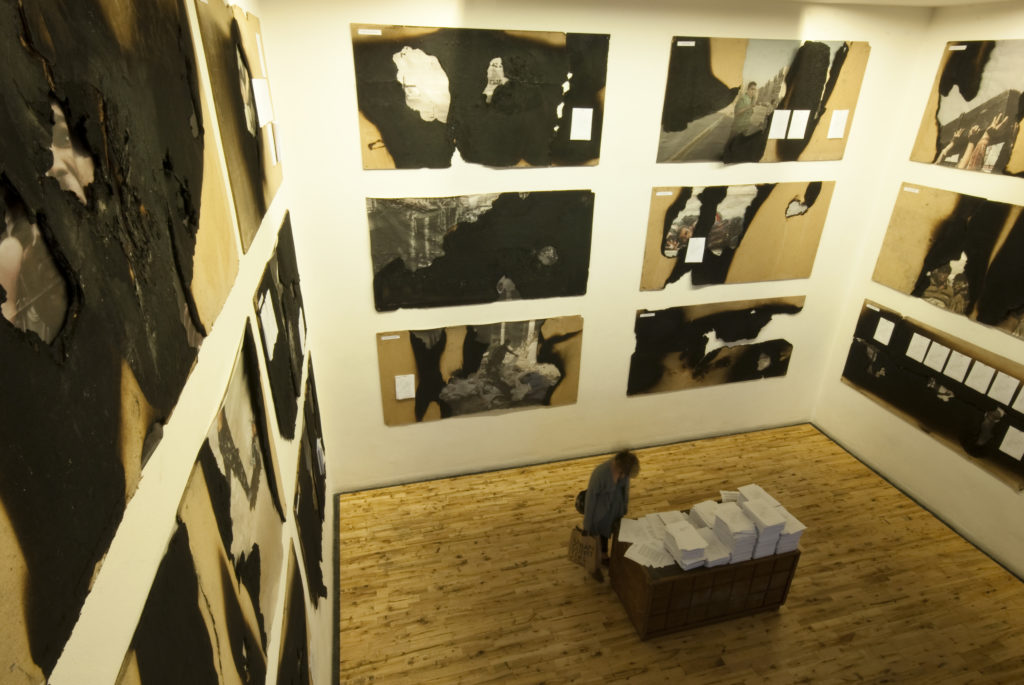
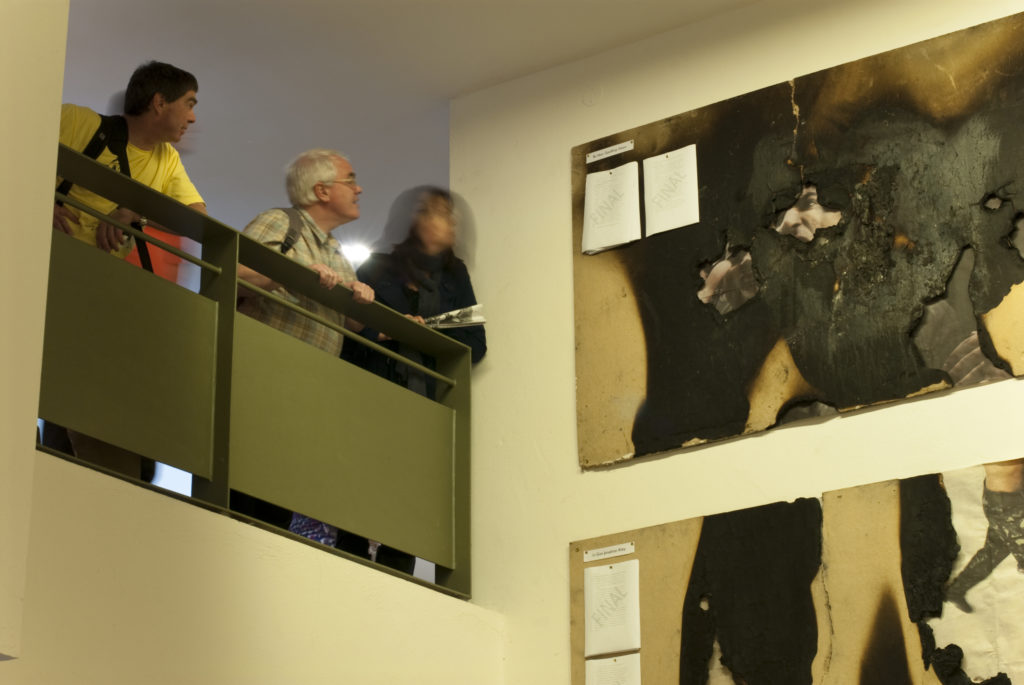
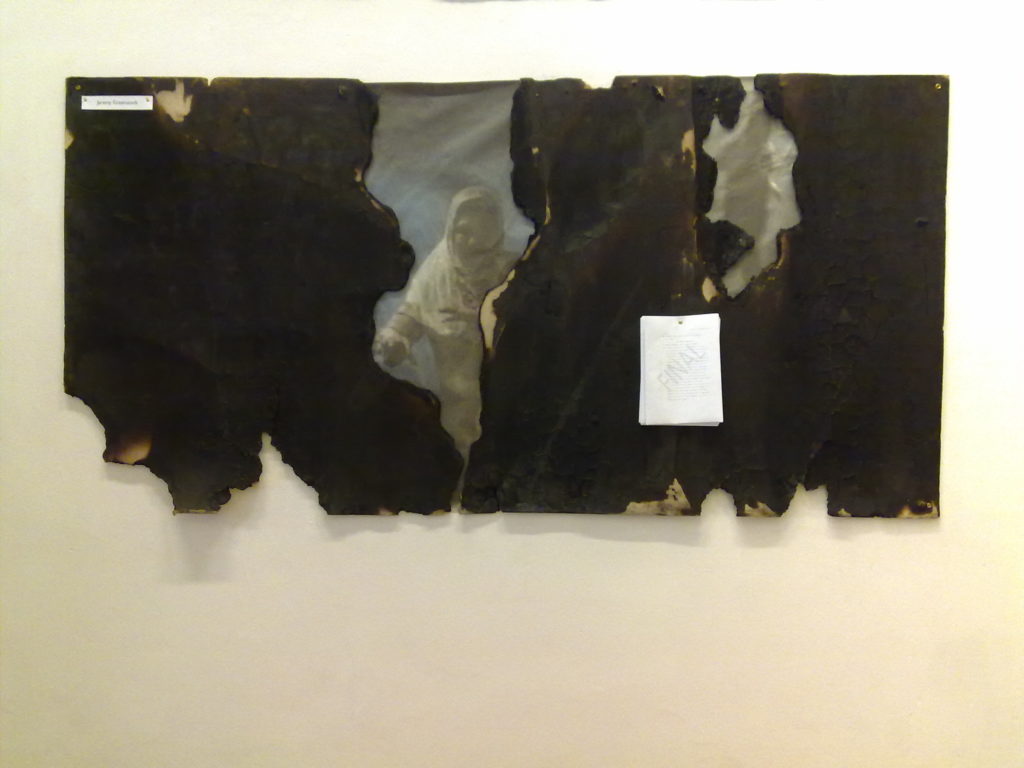
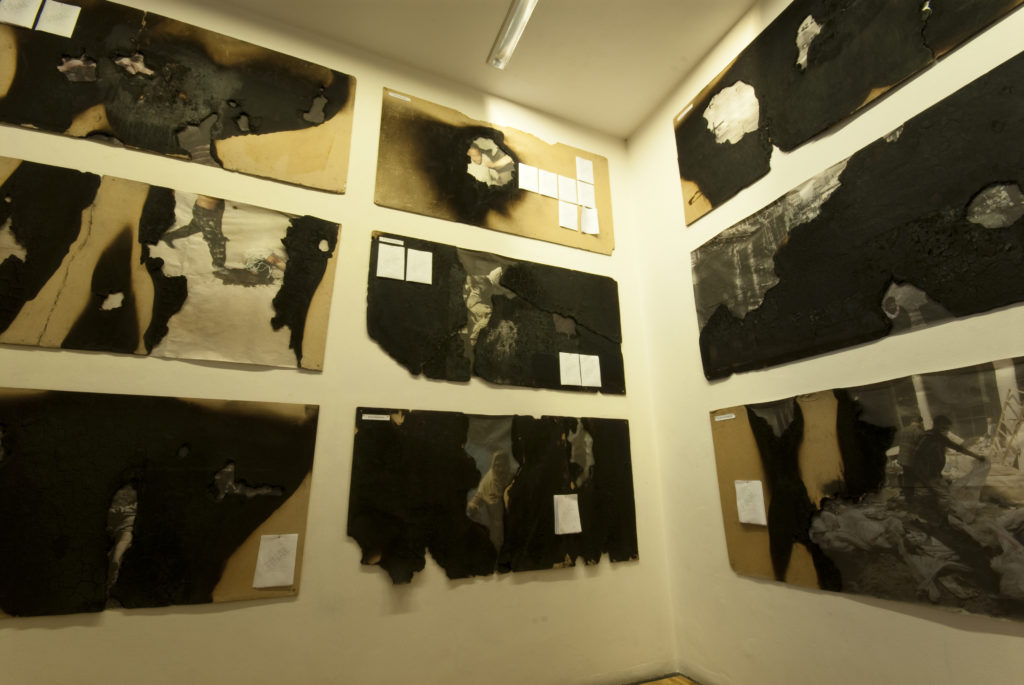
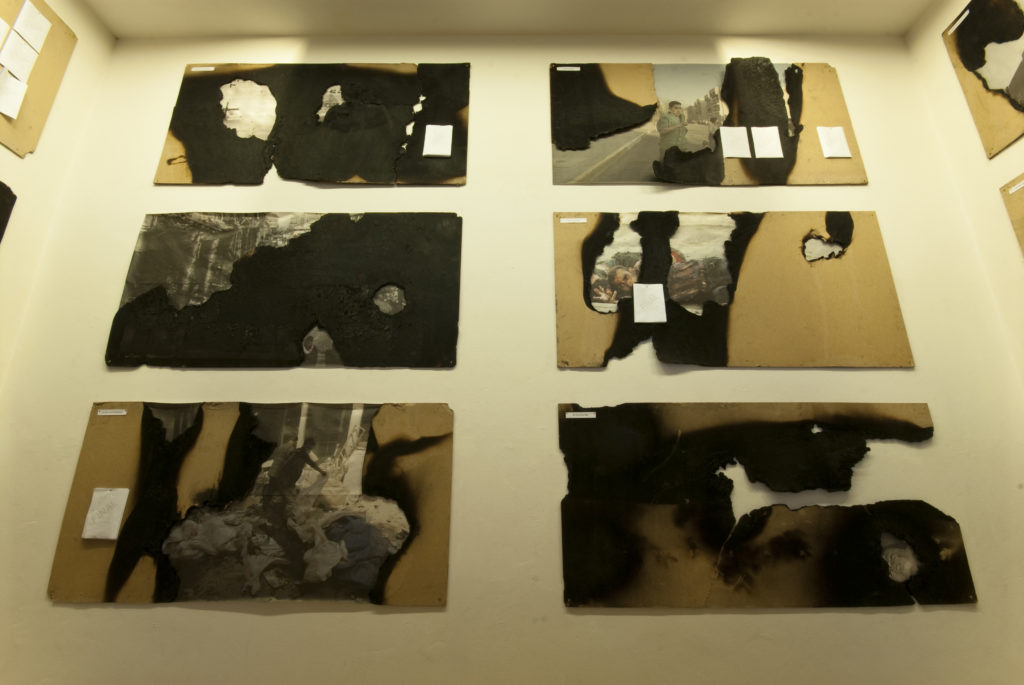
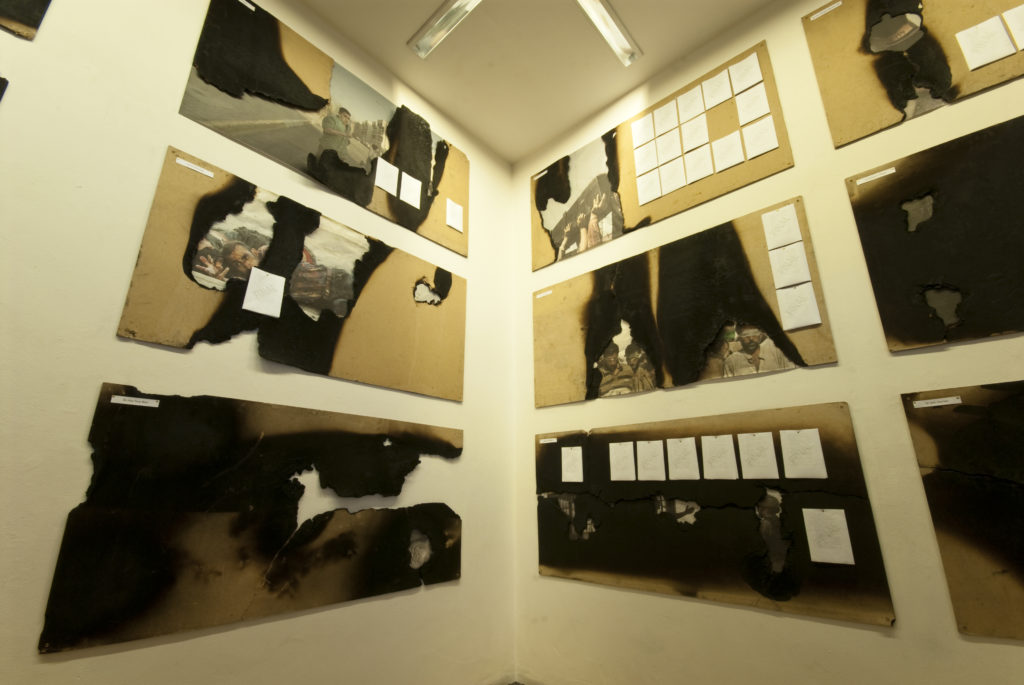

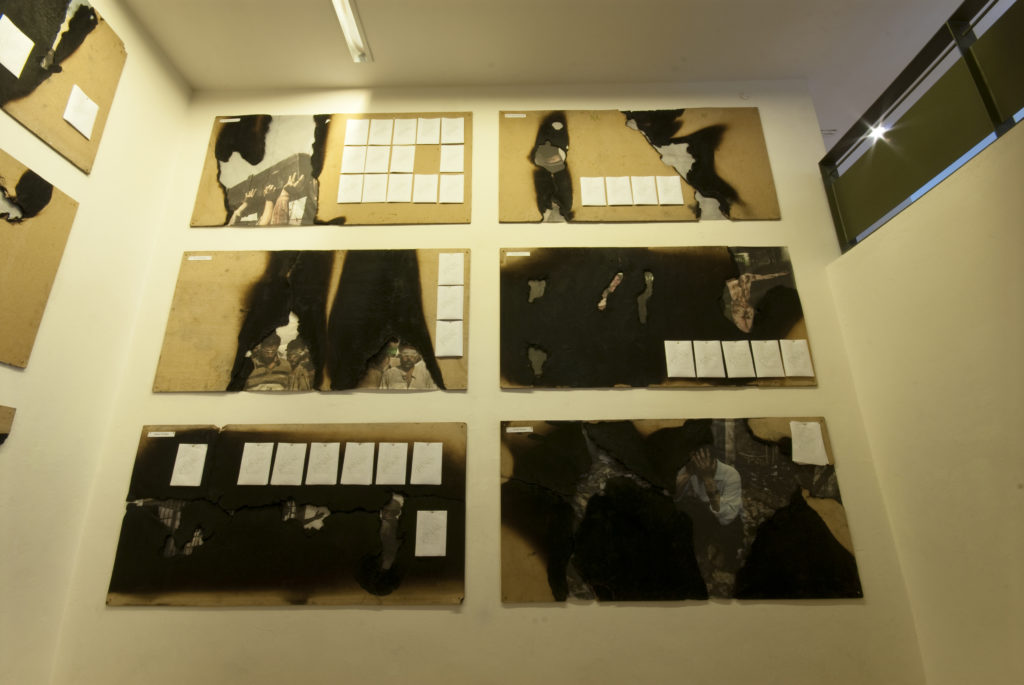
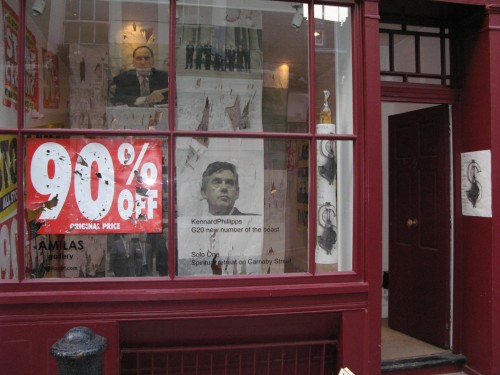
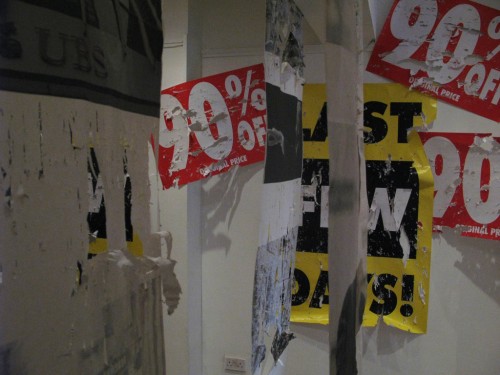
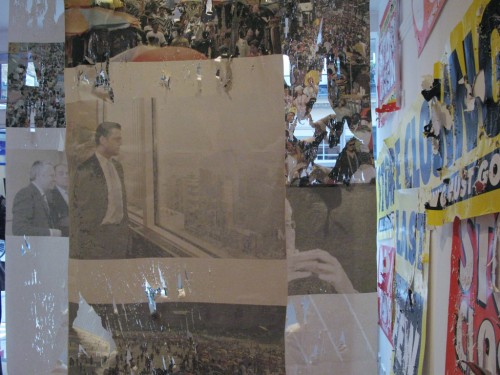
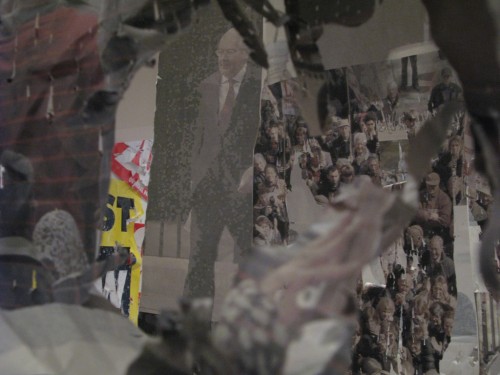
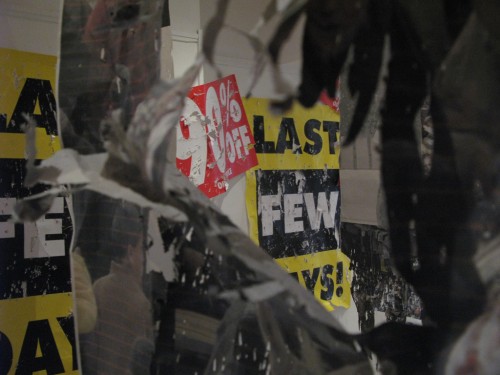
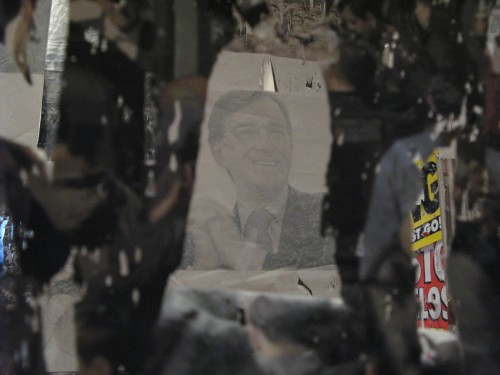
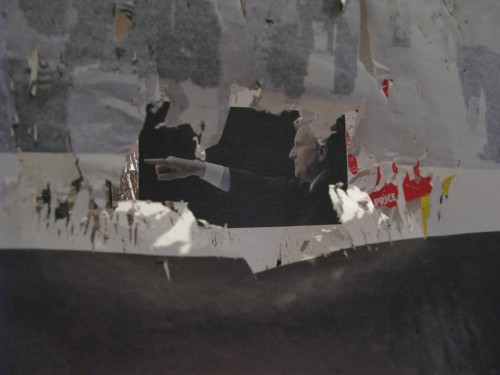


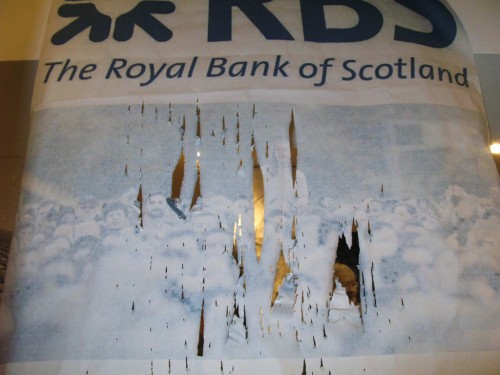
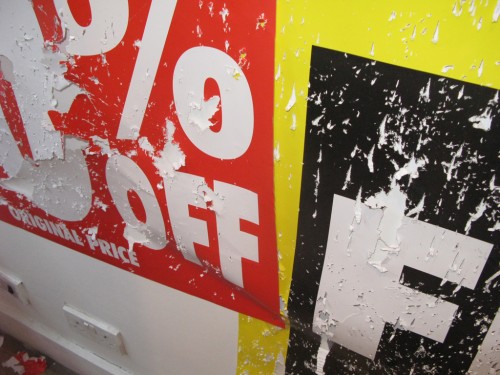
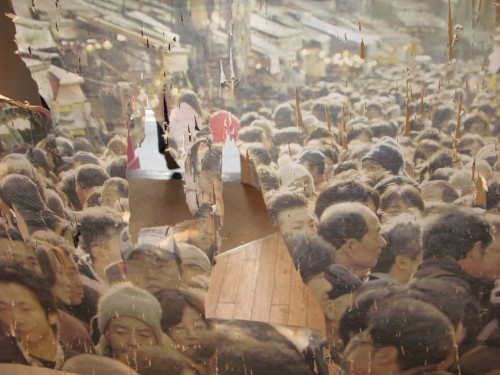
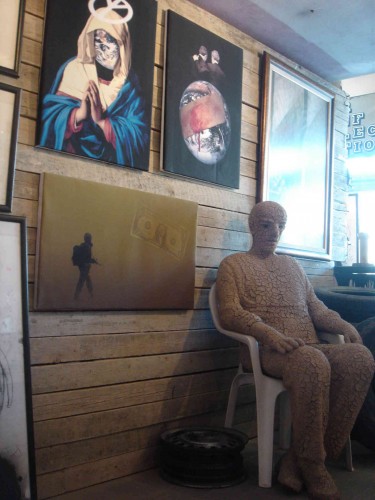
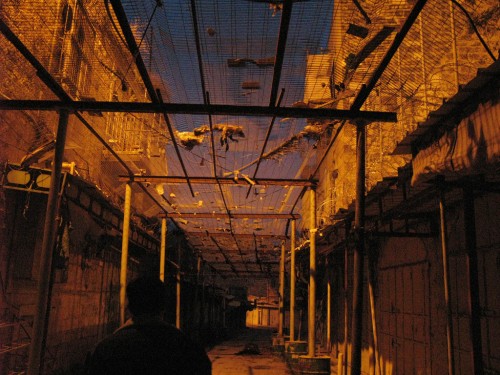
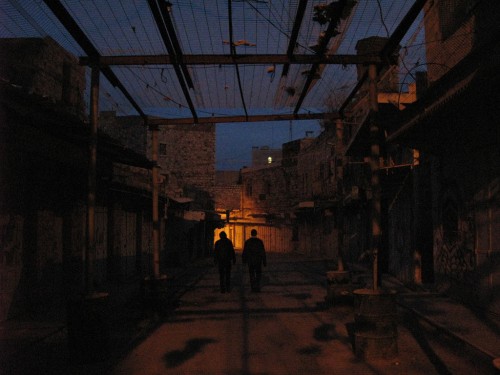
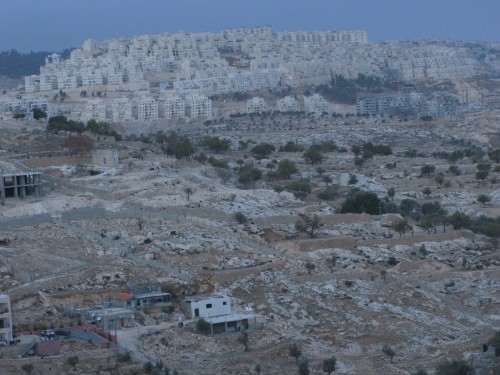
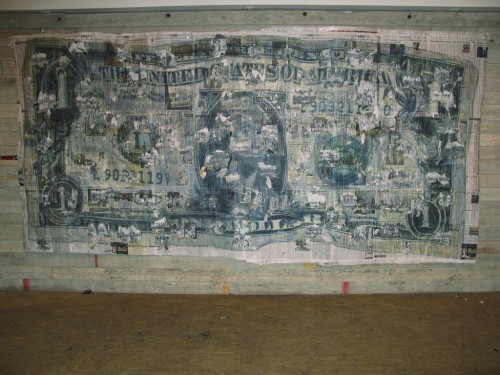
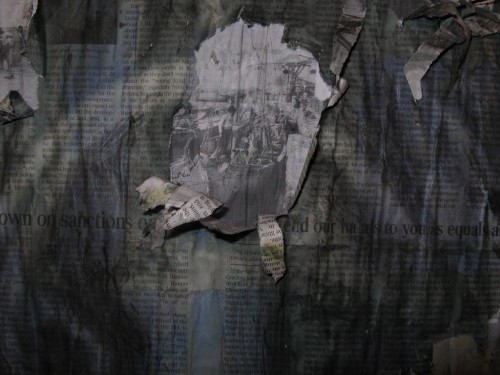
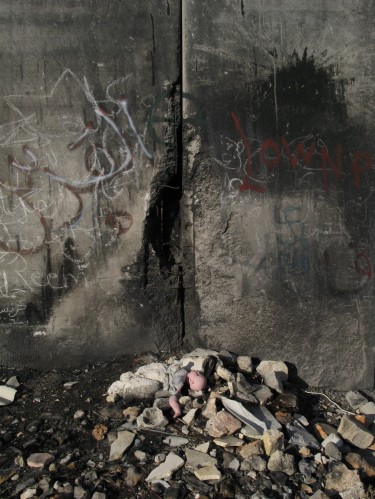
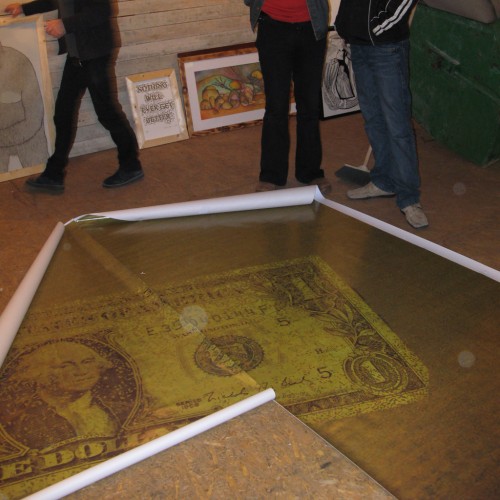
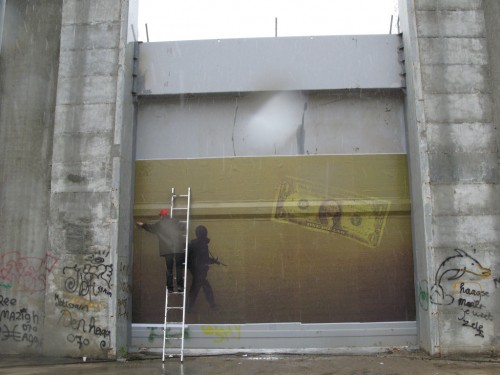
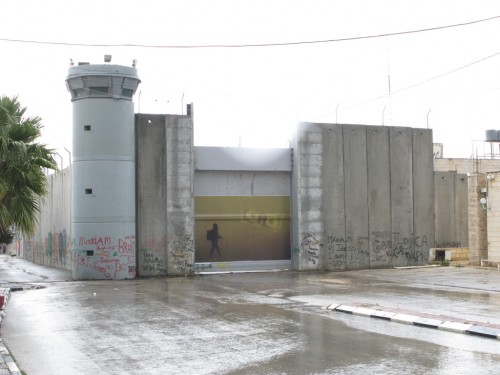
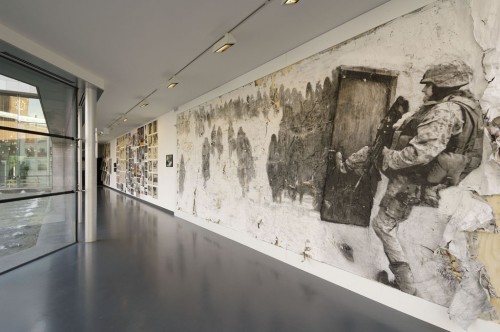
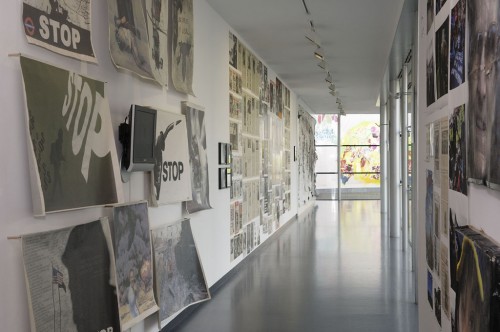
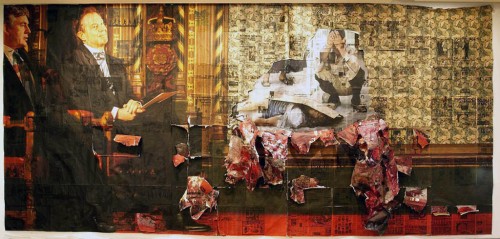
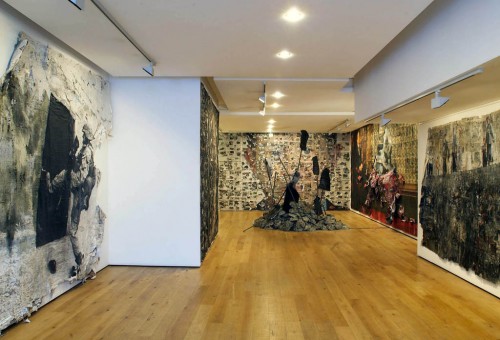

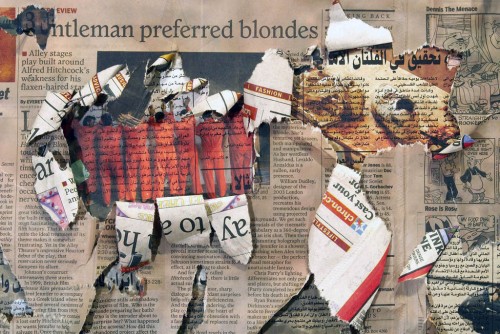
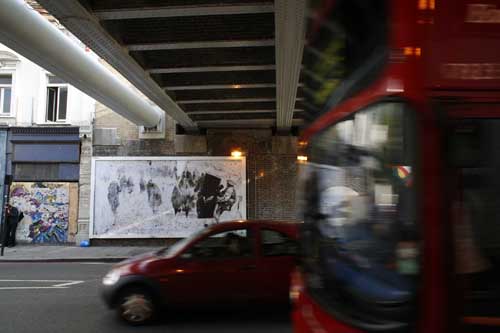
 Iraq Destroyed
Iraq Destroyed